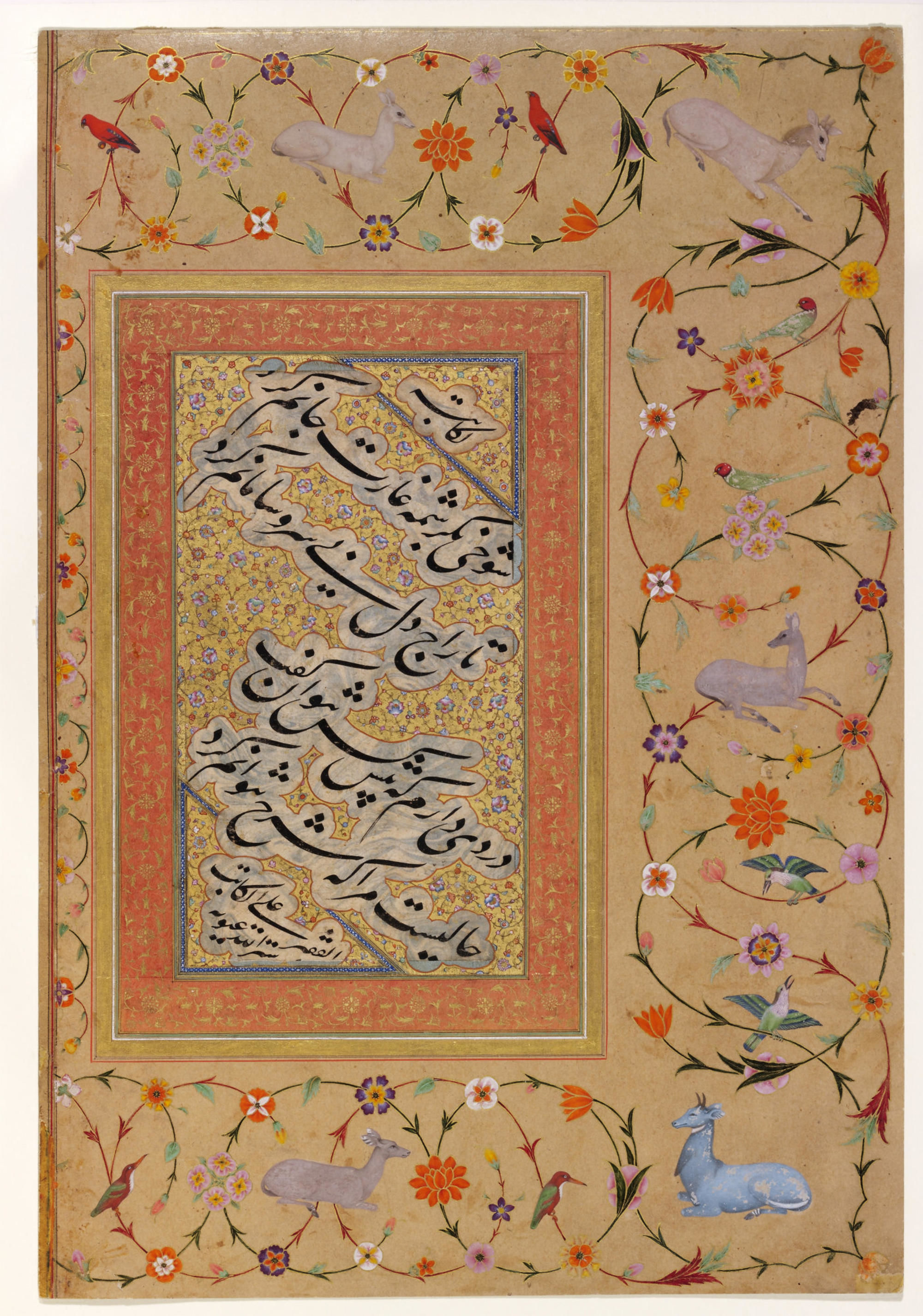Click on the image to zoom
Quatrain by al-Faqir 'Ali al Katib (Mir 'Ali)
- Accession Number:AKM255
- Place:Agra, India
- Dimensions:37.9 x 25.6 cm
- Date:about 1640
- Materials and Technique:Opaque watercolour, gold, ink, paper
The 16th and 17th centuries witnessed a growing interest in art and the art of collecting in the three “gunpowder” empires, beginning with the Safavids in Iran and followed by the Ottomans and Mughals. Not only did more artists exhibit a hitherto rare sense of self-awareness by increasingly signing their works, but the royal and wealthy patrons who compiled or commissioned the albums had the chance to express their own taste and connoisseurship through their collecting.
These extraordinary codices were filled with specimens of calligraphy, painting and drawing, including single-page, finished compositions as well as elements of illustrated manuscripts and calligraphy exercises. Artists’ and calligraphers’ works were recognized within the albums for their individual talents and styles — sometimes by glosses added by the patron himself. This album folio contains writing by one of the greatest masters of the nasta'liq script, Mir 'Ali (died about 1544), who served in Herat and Bukhara at the Timurid, Uzbek and Safavid courts and was extolled by Qadi Ahmad in his 16th-century treatise on calligraphers and painters (Qadi Ahmad in Minorsky 1959, p. 131).
The calligraphic text has been pasted onto an album page with borders depicting flora and fauna, here including seated deer, kingfishers, parrots and other birds. It is possible the Mughals admired Mir 'Ali not only for his talent but also because of the praise he gave to Babur, the founder of the Mughal dynasty, in one of his poems (Welch and Welch 1982, p. 220).
References
V. Minorsky (transl.), Calligraphers and Painters: A Treatise by Qadi Ahmad, Son of Mir Munshi (circa A.H. 1015/A.D. 1606). Washington, D.C. 1959.
Anthony Welch and Stuart Cary Welch, Arts of the Islamic Book: The Collection of Prince Sadruddin Aga Khan. London, 1982. ISBN: 9780801498824
Note: This online resource is reviewed and updated on an ongoing basis. We are committed to improving this information and will revise and update knowledge about this object as it becomes available.


